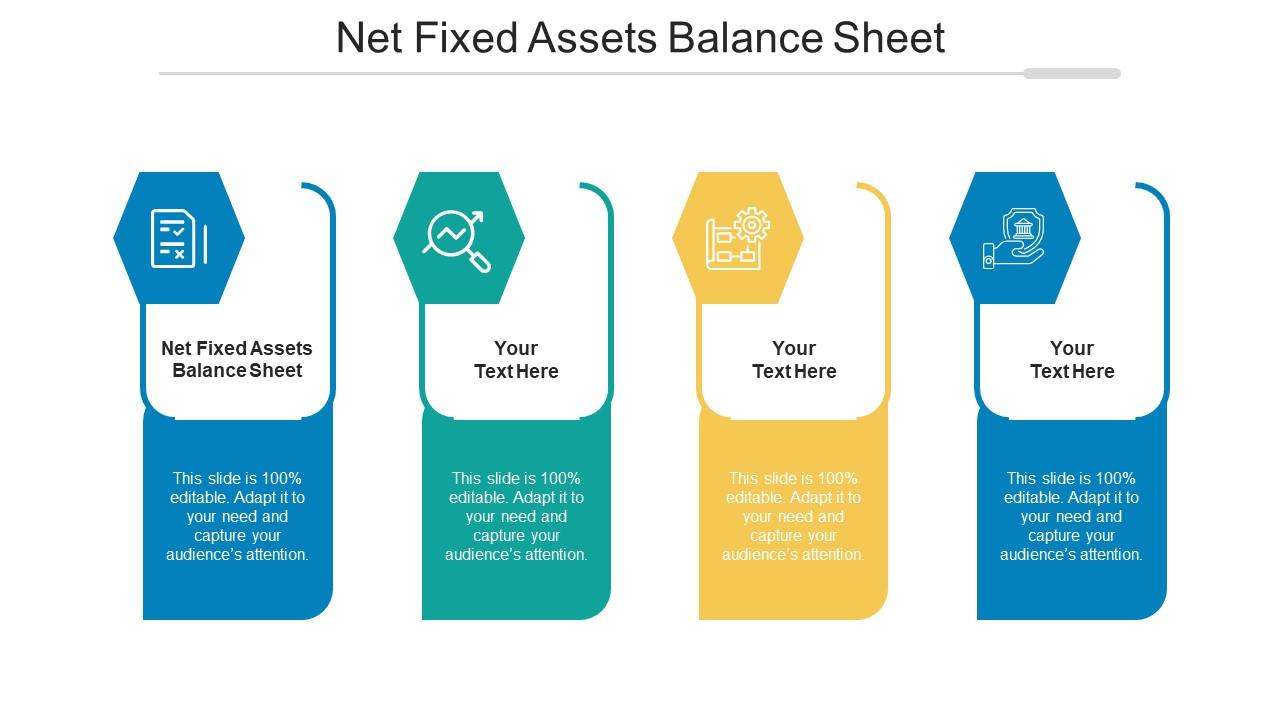

Finance
Why Do Companies Offer Buyouts
Modified: December 30, 2023
Discover why companies offer buyouts and how they impact finance. Unlock insights into this strategic decision-making process and its financial implications.
(Many of the links in this article redirect to a specific reviewed product. Your purchase of these products through affiliate links helps to generate commission for LiveWell, at no extra cost. Learn more)
Table of Contents
- Introduction
- Definition of a buyout
- Reasons for companies offering buyouts
- Cost-cutting measures
- Reduction in workforce
- Changing business strategy
- Merger or acquisition
- Employee morale and engagement
- Retirement or succession planning
- Benefits for companies offering buyouts
- Cost savings
- Improved efficiency
- Flexibility in restructuring
- Managing talent
- Potential drawbacks of buyouts
- Loss of experienced employees
- Negative impact on morale
- Legal and financial considerations
- Conclusion
Introduction
Companies often face various challenges and changes in their business operations, prompting them to explore strategies that can help them adapt and thrive in a dynamic marketplace. One such strategy is offering buyouts to employees. A buyout is an arrangement where a company provides financial incentives to employees to voluntarily leave their positions.
Buyouts have become increasingly common in today’s business landscape, as companies seek to streamline operations, reduce costs, and restructure their workforce. This article will explore the reasons why companies offer buyouts, the benefits they can bring, and potential drawbacks that should be considered.
Before delving into the details, it’s important to understand the definition of a buyout. A buyout, also known as a voluntary separation program or voluntary retirement program, is a strategic move by companies to encourage employees to leave the organization voluntarily. In exchange, employees are provided with certain financial incentives, such as a lump sum payment, extended healthcare benefits, or enhanced pension plans.
Now, let’s explore the reasons why companies opt to offer buyouts to their employees.
Definition of a buyout
A buyout, also known as a voluntary separation program or voluntary retirement program, is an arrangement where a company provides financial incentives to employees to voluntarily leave their positions. The main goal of a buyout is to reduce the size of the workforce and facilitate organizational restructuring.
In a buyout, employees are offered a package that typically includes a lump sum payment, extended healthcare benefits, and enhanced pension plans. The specific terms and conditions of a buyout can vary depending on the company’s objectives and the employees’ eligibility criteria.
Buyouts are usually initiated when a company aims to downsize its operations or address financial challenges. By offering buyouts, companies can reduce their workforce in a more cost-effective and less disruptive manner compared to layoffs or involuntary terminations.
It’s important to note that buyouts are voluntary, meaning that employees have the choice to accept or decline the offer. Employees who choose to accept a buyout package are essentially agreeing to leave the company and relinquish their employment rights and benefits.
The decision to offer a buyout is typically driven by the company’s strategic goals and financial considerations. It is a proactive approach to managing human resources and aligning the workforce with the organization’s changing needs and priorities.
While buyouts can be mutually beneficial for both the company and the employees, it is important for organizations to ensure that the process is fair, transparent, and compliant with all relevant employment laws and regulations.
Now that we have established the definition of a buyout, let’s explore the reasons why companies choose to offer buyouts to their employees.
Reasons for companies offering buyouts
Companies offer buyouts for a variety of reasons, ranging from cost-cutting measures to strategic workforce planning. Understanding these reasons can provide valuable insights into the motivations behind buyout programs and their potential benefits. Here are some common reasons why companies choose to offer buyouts:
- Cost-cutting measures: One of the primary reasons companies offer buyouts is to reduce operating expenses. By incentivizing employees to voluntarily leave, companies can avoid costs associated with severance packages, long-term benefits, and potential legal implications.
- Reduction in workforce: Companies may need to downsize their workforce due to shifts in market demand, changes in industry trends, or economic downturns. Buyouts provide a strategic and less disruptive way to manage workforce reduction compared to layoffs.
- Changing business strategy: Companies may undergo shifts in their long-term business strategy, necessitating organizational realignment. Offering buyouts allows companies to restructure their workforce, ensuring that the right talent is in the right positions to support the new strategy.
- Merger or acquisition: During mergers or acquisitions, companies often face the challenge of integrating two different workforces. Buyouts can be used as a tool to streamline the transition process by incentivizing employees who may not align with the new company’s culture or organizational structure to exit voluntarily.
- Employee morale and engagement: Companies may offer buyouts as a means to improve overall employee morale and engagement. By providing opportunities for voluntary separation, companies can create a more positive work environment for remaining employees, as they see that the company is taking proactive steps to address challenges.
- Retirement or succession planning: Buyouts can be an attractive option for companies looking to manage the retirement of senior-level employees or plan for succession. By offering generous incentives, companies can encourage experienced employees to retire early, which opens up opportunities for younger talent to advance their careers.
These reasons reflect the diverse motivations behind buyout programs. By carefully considering these factors and aligning them with the company’s strategic objectives and workforce planning needs, companies can implement buyouts effectively and realize their benefits.
Cost-cutting measures
One of the key reasons why companies offer buyouts is to implement cost-cutting measures. In today’s competitive business environment, companies are constantly seeking ways to optimize their operations and reduce expenses. Buyouts can be an effective strategy to achieve cost savings in several ways:
- Severance and benefits: When employees accept a buyout offer, the company can avoid the long-term costs associated with severance packages. This includes payments for unused vacation or sick leave, as well as potential unemployment benefits. By providing a lump sum payout as part of the buyout package, companies can settle all financial obligations to the departing employees.
- Healthcare and retirement benefits: Companies offering buyouts often extend healthcare and retirement benefits for a specific period to incentivize employees to accept the offer. However, once employees accept the buyout and leave the company, the ongoing costs associated with these benefits are significantly reduced. This can result in substantial savings for the company in the long run.
- Operational expenses: By reducing the size of the workforce through buyouts, companies can lower their operational expenses. With fewer employees, companies can save on various costs, such as salaries, training and development expenses, office space, and equipment. This streamlining of operations can lead to significant cost reductions and improved overall financial performance.
- Efficiency gains: In some cases, companies may offer buyouts to target specific departments or positions that are no longer aligned with the company’s strategic goals. By incentivizing employees in these areas to leave, companies can reallocate resources and focus on high-priority areas. This realignment can result in increased efficiency and productivity, leading to cost savings in the long term.
It’s important for companies to carefully analyze the potential cost savings and weigh them against the upfront costs of offering buyouts. While there may be initial expenses associated with the buyout packages, the long-term savings can often outweigh these costs. By implementing effective cost-cutting measures through buyouts, companies can improve their financial stability and allocate resources to other strategic initiatives.
Reduction in workforce
Another significant reason why companies offer buyouts is to reduce their workforce. There are various situations where companies may need to downsize their operations, such as changes in market demand, technological advancements, or economic downturns. Implementing buyouts provides a strategic and less disruptive way to manage the reduction in workforce compared to layoffs or involuntary terminations.
Here are some key points to consider in relation to the reduction in workforce through buyouts:
- Cost-effective downsizing: Buyouts offer companies a cost-effective approach to downsizing their workforce. By providing attractive financial incentives to employees, companies can encourage voluntary separation. This alleviates the need for more costly and potentially contentious methods like layoffs, which can result in severance pay, legal disputes, and damage to the company’s reputation.
- Retaining talent: Companies offering buyouts often prioritize retaining their most valuable employees. By incentivizing those who are considering leaving anyway, companies can retain the employees who are critical to the organization’s success. This targeted approach helps preserve institutional knowledge and key skills within the remaining workforce while still achieving the necessary reduction in staff.
- Minimizing disruption: Layoffs can create a stressful and uncertain environment within the company, impacting employee morale and productivity. In contrast, buyouts provide a more positive and voluntary separation process. This can help minimize the overall disruption to the organization and maintain a more harmonious working environment for the employees who remain.
- Strategic workforce planning: Offering buyouts allows companies to strategically realign their workforce based on changing business needs. It provides an opportunity to reshape the organization by eliminating positions that are no longer essential or relevant, while simultaneously creating room for new roles or skills that may be necessary for future growth.
- Smooth transition: Companies undergoing transitions like mergers, acquisitions, or operational restructuring can use buyouts to facilitate a smoother transition. By offering buyouts to employees who may not fit the new organizational structure or culture, companies can reduce resistance to change and enhance the integration process.
Overall, the reduction in workforce through buyouts offers companies a strategic, cost-effective, and less disruptive approach to downsizing. By carefully planning and executing buyouts, companies can achieve their workforce reduction goals while minimizing the negative impact on employee morale and maintaining a more positive work environment.
Changing business strategy
Companies often go through periods of change, where they need to adapt their business strategy in response to market trends, technological advancements, or shifts in consumer preferences. Offering buyouts can be a practical solution to realign the workforce and ensure that the organization has the right talent in the right positions to support the new strategic direction.
Here are some key points to consider regarding the use of buyouts during a changing business strategy:
- Aligning talent with new priorities: As companies shift their business strategy, certain skills and roles may become less relevant, while new ones may emerge as critical. By offering buyouts, companies can encourage employees who no longer align with the new strategic direction to willingly leave the organization. This facilitates a smoother transition and enables the company to attract and retain talent that is better suited to the new priorities.
- Facilitating organizational restructuring: Buyouts provide an opportunity for companies to restructure their organizational hierarchy and reporting lines. This can involve flattening the organizational structure, eliminating redundant positions, and creating new roles to support the new strategy. By using buyouts strategically, companies can reshape their workforce based on the changing needs of the business.
- Promoting innovation and agility: Changing business strategies often require companies to embrace innovation and be more agile in their operations. By offering buyouts, companies can remove barriers and outdated ways of thinking, encouraging employees to explore new ideas and take calculated risks. This can foster a culture of innovation and help the company adapt more quickly to market changes.
- Optimizing resource allocation: During a change in business strategy, companies need to allocate their resources effectively. Buyouts enable companies to reevaluate the distribution of resources, including budget, personnel, technology, and time. By strategically implementing buyouts, companies can optimize their resource allocation and invest in areas that align with the new strategic objectives.
- Enhancing competitiveness: A changing business strategy often involves positioning the company to be more competitive in the market. By offering buyouts, companies can create a more agile and efficient workforce, better positioned to respond to industry dynamics and customer demands. This increased competitiveness can lead to market growth and improved financial performance.
Overall, offering buyouts during a changing business strategy provides companies with the flexibility to align their workforce with new priorities and enhance their competitiveness in the marketplace. By strategically leveraging buyouts, companies can realign talent, promote innovation, and optimize resource allocation, ultimately positioning themselves for long-term success.
Merger or acquisition
Merger or acquisition activities often involve combining two separate entities into a single company. During this process, companies may offer buyouts as part of their integration strategy to manage the transition effectively. Buyouts can be used to streamline the workforce and align it with the new organizational structure and culture.
Here are some key points to consider regarding the use of buyouts during a merger or acquisition:
- Integrating workforces: When two companies merge or one company acquires another, there may be redundant roles or overlapping positions within the combined organization. To ease the integration process, companies may offer buyouts to employees in these areas, incentivizing them to leave voluntarily. This reduces duplication and facilitates a smoother transition.
- Cultural alignment: Mergers and acquisitions often bring together employees from different organizational cultures. Offering buyouts can help address any cultural clashes and promote a cohesive culture within the new organization. Employees who may not align with the new company’s culture or values can choose to accept the buyout and exit, creating a more harmonious work environment for the remaining employees.
- Reduction of duplicate roles: In a merger or acquisition, there may be duplicate roles across departments or functions. By offering buyouts, companies can identify and eliminate these duplicate positions, resulting in cost savings and improved operational efficiency. This allows the new organization to optimize its workforce and create a leaner structure.
- Retaining key talent: During a merger or acquisition, companies want to retain their most valuable employees while streamlining the workforce. By offering buyouts, companies can incentivize employees who are critical to the organization’s success to stay, while allowing those who may not fit the new structure or have overlapping roles to voluntarily leave. This helps maintain continuity and crucial expertise within the new organization.
- Creating a unified culture: Mergers and acquisitions can be challenging for employees who may feel uncertain or anxious about the changes. By offering buyouts and managing the workforce integration carefully, companies can create a sense of unity and stability within the new organization. This can help ease employee concerns and foster a more cohesive and productive work environment.
Overall, offering buyouts during a merger or acquisition enables companies to effectively integrate workforces, align organizational culture, eliminate duplicate roles, retain key talent, and create a unified and cohesive organization. By strategically implementing buyouts, companies can navigate the complexities of mergers and acquisitions more smoothly and position themselves for long-term success.
Employee morale and engagement
Employee morale and engagement play a crucial role in the success of any organization. Companies offering buyouts recognize that maintaining high levels of morale and engagement among their workforce is essential for productivity, innovation, and overall employee satisfaction. Here’s how buyouts can impact employee morale and engagement:
- Opportunities for voluntary separation: By offering buyouts, companies provide employees with the opportunity to make a personal decision about their employment. This sense of autonomy can positively impact employee morale, as individuals feel empowered to choose their own career path.
- Addressing job insecurity: During times of organizational change, such as downsizing or restructuring, employees may experience job insecurity and fear layoffs. Offering buyouts can alleviate some of these concerns, as it provides an alternative path for employees to leave the company on their own terms. This, in turn, can help reduce stress and anxiety among the remaining workforce.
- Creating a positive work environment: Companies that offer buyouts demonstrate their commitment to creating a positive work environment. Employees see that the company is taking proactive steps to address challenges and ensure the well-being of its workforce. This can enhance employee trust and loyalty, leading to increased engagement and morale.
- Enhancing job satisfaction: Buyouts can create opportunities for employees who may have been disengaged or dissatisfied with their current role or the company as a whole. By accepting a buyout, individuals can explore new career paths or pursue personal interests. This can lead to higher job satisfaction, as employees find themselves in roles that better align with their skills, interests, and goals.
- Boosting loyalty and commitment: Offering buyouts can send a message to employees that the company values their well-being and is committed to supporting their career growth. This can foster a sense of loyalty and commitment among the remaining workforce, as they perceive the company as caring and invested in their success.
It’s vital for companies to communicate effectively and transparently during the buyout process to maintain employee morale and engagement. By explaining the reasons behind the buyouts, providing support and resources for employees considering the offer, and ensuring fairness throughout the process, companies can mitigate any negative impact on morale and create a positive work environment.
Overall, buyouts can have a positive impact on employee morale and engagement by offering employees autonomy, addressing job insecurity, creating a positive work environment, enhancing job satisfaction, and boosting loyalty and commitment. When implemented strategically and communicated effectively, buyouts can contribute to a more engaged and motivated workforce.
Retirement or succession planning
Retirement and succession planning are critical aspects of talent management within organizations. Companies offering buyouts often use them as a means to manage the retirement of senior-level employees or plan for succession within the organization.
Here are key points to consider regarding retirement or succession planning through buyouts:
- Transitioning to a new generation: As senior-level employees approach retirement age, companies may want to transition to a new generation of leaders. Buyouts can incentivize experienced employees who are nearing retirement to leave voluntarily, creating opportunities for younger talent to advance their careers and assume leadership roles.
- Maintaining institutional knowledge: As senior employees retire, organizations risk losing valuable institutional knowledge accumulated over many years. Companies can use buyouts as a way to encourage retiring employees to pass on their knowledge and experience to younger employees before they leave. This can help ensure a smooth transition and minimize the potential impact of knowledge gaps.
- Creating career advancement opportunities: Buyouts provide employees with the option to retire early and pursue personal interests, while also creating career advancement opportunities for others within the organization. This can motivate employees to work towards their professional goals, knowing that there are possibilities for growth and progression as senior employees exit the workforce.
- Succession planning: Buyouts can be part of a larger succession planning strategy. By offering attractive buyout packages, companies can identify and nurture future leaders within the organization. It allows companies to proactively manage talent and ensure a smooth transition of leadership when senior employees retire.
- Managing workforce demographics: Companies may face challenges related to workforce demographics, where a large portion of the workforce is nearing retirement age. Offering buyouts can help organizations address these demographic shifts and create opportunities for new talent to enter the workforce, bringing fresh perspectives and skills.
Retirement or succession planning through buyouts requires careful consideration and balancing the needs of both retiring and remaining employees. Companies must ensure that the knowledge transfer process is effectively managed, and that training and development initiatives are in place to groom the next generation of leaders.
By strategically using buyouts for retirement or succession planning, companies can create a smooth transition, ensure continuity of operations, and cultivate a pipeline of talent ready to assume leadership roles.
Benefits for companies offering buyouts
Offering buyouts can provide various benefits for companies, ranging from cost savings to improved efficiency and flexibility in restructuring. Understanding these benefits can help organizations make informed decisions when implementing buyout programs. Here are some key advantages for companies offering buyouts:
- Cost savings: Companies can achieve significant cost savings by offering buyouts. By reducing the size of the workforce through voluntary separations, companies can avoid expenses associated with severance packages, long-term benefits, and potential legal disputes that may arise from layoffs or involuntary terminations. These cost savings can have a positive impact on the company’s financial performance.
- Improved efficiency: Implementing buyouts provides an opportunity for companies to streamline operations and improve efficiency. By strategically realigning the workforce and eliminating redundant positions, companies can optimize their resources and ensure that employees are in roles that best align with the organization’s goals. This leads to increased productivity and effectiveness within the company.
- Flexibility in restructuring: Offering buyouts gives companies greater flexibility in restructuring their organization. It allows for a smoother transition during times of change, such as mergers, acquisitions, or shifts in business strategy. By incentivizing employees to voluntarily leave, companies can adapt and reshape their workforce more efficiently and minimize disruption in the process.
- Managing talent: Buyouts provide a strategic tool for talent management within companies. They offer an opportunity to retain key talent by providing incentives to those who are critical to the organization’s success. By strategically offering buyouts, companies can ensure that they have the right people in the right roles to drive innovation, growth, and long-term success.
- Enhanced employee morale: Offering buyouts can positively impact employee morale among the remaining workforce. Employees see that the company is taking proactive measures to address challenges and create a more positive work environment. This can lead to improved job satisfaction, increased engagement, and a sense of loyalty towards the company.
It’s important to note that the benefits of buyouts can vary depending on the specific goals and circumstances of each company. While there are clear advantages to offering buyouts, it’s crucial for organizations to carefully plan and execute the process to ensure fairness, transparency, and compliance with legal obligations.
By leveraging the benefits of buyouts, companies can achieve cost savings, improve efficiency, adapt to change more effectively, manage talent strategically, and enhance employee morale. These advantages can contribute to the long-term success and sustainability of the organization.
Cost savings
One of the key benefits for companies offering buyouts is the potential for significant cost savings. By implementing buyouts, companies can reduce their operating expenses in several ways, resulting in improved financial performance. Here are some key points to consider regarding cost savings through buyouts:
- Severance and benefits: When employees accept a buyout offer, companies can avoid the long-term costs associated with severance packages. This includes payments for unused vacation or sick leave, as well as potential unemployment benefits. By providing a lump sum payout as part of the buyout package, companies can settle all financial obligations to the departing employees.
- Healthcare and retirement benefits: Companies offering buyouts often extend healthcare and retirement benefits for a specific period to incentivize employees to accept the offer. However, once employees accept the buyout and leave the company, the ongoing costs associated with these benefits are significantly reduced. This reduction in benefit expenses can result in significant savings for the company in the long run.
- Operational expenses: By reducing the size of the workforce through buyouts, companies can lower their operational expenses. With fewer employees, companies can save on various costs, such as salaries, training and development expenses, office space, and equipment. This streamlining of operations can lead to significant cost reductions and improved overall financial performance.
- Efficiency gains: In addition to reducing operational expenses, buyouts can also lead to increased efficiency within the company. By strategically aligning the workforce and eliminating redundant positions, companies can optimize their resources. This results in employees being in roles that best align with the company’s goals and allows for improved productivity and cost-effectiveness.
- Minimizing legal costs: Layoffs or involuntary terminations can sometimes lead to legal disputes, which can be costly for companies to resolve. Offering buyouts provides companies with a more amicable and voluntary separation process, minimizing the risk of legal challenges and associated legal costs.
It’s important to note that while there may be upfront costs associated with providing buyout packages to employees, the long-term cost savings can often outweigh these expenses. Companies must carefully analyze the potential savings and weigh them against the initial costs to ensure that the buyout program is financially viable and aligned with their overall budgetary goals.
Overall, implementing buyouts as a cost-saving measure allows companies to reduce severance costs, minimize benefit expenses, optimize operational efficiency, and potentially avoid legal disputes. These cost savings can contribute to improved financial stability and provide companies with the flexibility to allocate resources to other strategic initiatives.
Improved efficiency
Implementing buyouts can lead to improved efficiency within a company, resulting in increased productivity, streamlined operations, and more cost-effective resource allocation. By strategically aligning the workforce and eliminating redundant positions, companies can optimize their resources and enhance overall efficiency. Here are key points to consider regarding how buyouts can improve efficiency:
- Workforce realignment: Buyouts allow companies to strategically realign their workforce based on changing business needs. By offering buyouts, companies can encourage employees who no longer align with the new strategic direction or whose roles have become redundant to voluntarily leave the organization. This streamlining of the workforce ensures that employees are in roles that best align with the company’s goals, resulting in increased productivity and efficiency.
- Elimination of redundant positions: Through buyouts, companies can identify and eliminate redundant positions. This consolidation of roles eliminates duplication of tasks and responsibilities, allowing for a more streamlined and efficient workflow. By removing unnecessary layers of management or nonessential positions, companies can create a more agile and responsive organizational structure.
- Optimized resource allocation: Buyouts prompt companies to assess their resource allocation and make necessary adjustments. With a smaller workforce, companies can allocate their resources more effectively, ensuring that they are focused on high-priority areas. By reallocating resources to areas that generate the most value, companies can maximize efficiency and achieve better overall performance.
- Increased productivity: By aligning the workforce with the company’s strategic goals, buyouts can increase employee productivity. Employees who remain after the buyout are more likely to be highly engaged, motivated, and focused on the company’s objectives. With a leaner workforce, companies can also provide more personalized attention and development opportunities to employees, further enhancing productivity levels.
- Streamlined decision-making process: With a smaller and more focused workforce, companies can streamline their decision-making process. Fewer layers of hierarchy and reduced bureaucracy speed up communication and decision-making, allowing for more efficient problem-solving and implementation of new initiatives.
By implementing buyouts, companies can unlock improvements in efficiency that lead to increased productivity, streamlined operations, optimized resource allocation, and faster decision-making. However, it’s essential for companies to carefully plan and manage the buyout process to minimize disruptions and ensure a smooth transition for both departing and remaining employees.
Overall, buyouts provide companies with an opportunity to reshape their workforce, eliminate redundancy, optimize resource allocation, and increase productivity. When executed strategically, buyouts can improve efficiency and contribute to the overall success and competitiveness of the organization.
Flexibility in restructuring
One of the key benefits for companies offering buyouts is the flexibility it provides in restructuring their organization. Buyouts allow companies to adapt to changes in the business landscape, realign their operations, and create a more agile and competitive structure. Here are key points to consider regarding the flexibility in restructuring through buyouts:
- Streamlined transition: During periods of change, such as mergers, acquisitions, or shifts in business strategy, companies often need to restructure their organization. Offering buyouts provides a smoother transition process by incentivizing employees who may not align with the new organizational structure or culture to leave voluntarily. This reduces resistance to change and facilitates a more seamless integration process.
- Elimination of redundant positions: Buyouts enable companies to identify and eliminate redundant or overlapping positions. By strategically aligning the workforce, companies can streamline their operations and remove inefficiencies. This organizational streamlining allows for faster decision-making, improved collaboration, and greater agility in responding to market dynamics.
- Adapting to market shifts: Buyouts provide companies with the flexibility to adapt to changing market conditions. As business landscapes evolve, companies may need to shift their focus, reimagining their products, services, or target markets. With the ability to restructure through buyouts, companies can align their workforce with the new strategic direction, allocating resources and talent to areas that have the most potential for growth.
- Scaling operations: Companies experiencing rapid growth may need to scale their operations to meet increasing demand. Buyouts can be utilized to optimize the workforce, freeing up resources and capacity to accommodate growth. This flexibility in scaling operations allows companies to seize opportunities and expand their market presence more efficiently.
- Capitalizing on emerging trends: Industries and markets evolve over time, presenting new challenges and opportunities. Companies that offer buyouts can strategically restructure their workforce to capitalize on emerging trends. By realigning talent and skills, companies can position themselves at the forefront of market changes, enabling them to remain competitive and innovative.
It’s important for companies to assess their restructuring goals and develop a comprehensive plan before implementing buyouts. This involves considering the specific needs of the organization, identifying areas for improvement, and communicating the restructure process effectively to the workforce.
Overall, offering buyouts provides companies with the flexibility to restructure their organization in response to market shifts, streamline operations, adapt to changes in business strategy, scale their operations, and take advantage of emerging opportunities. When employed strategically, buyouts can effectively position companies for long-term success in an ever-evolving business landscape.
Managing talent
One of the key benefits for companies offering buyouts is the ability to strategically manage their talent. Buyouts provide companies with the opportunity to optimize their workforce, retain key talent, and ensure the right individuals are in the right roles to drive success. Here are key points to consider regarding managing talent through buyouts:
- Retaining key talent: Companies can strategically offer buyouts to encourage employees who are critical to the organization’s success to stay. By providing attractive buyout packages, companies can incentivize valuable employees to remain with the organization, retain their expertise, and contribute to future growth and innovation.
- Succession planning: Buyouts can be part of a comprehensive succession planning strategy. Organizations can strategically identify high-potential employees and groom them for future leadership roles. By offering buyouts to senior-level employees who are nearing retirement, companies can create career advancement opportunities for emerging talent, ensuring a smooth transition of leadership within the organization.
- Aligning talent with strategic goals: Companies can use buyouts as a means to align their workforce with their strategic goals. By offering buyouts to employees whose skills or positions are no longer aligned with the company’s objectives, organizations can create opportunities for new talent who possess the expertise needed to drive the company forward. This strategic alignment ensures that the right people are in the right roles, contributing to overall success.
- Enhanced employee engagement: When employees see that the organization is actively managing talent through buyouts, it can increase their engagement and loyalty. Employees appreciate when companies take steps to create a productive and successful workforce, which can lead to higher job satisfaction, increased commitment, and improved overall organizational performance.
- Addressing skills gaps: As industries and technologies evolve, companies may face skills gaps within their workforce. By offering buyouts strategically, companies can address these gaps and attract new talent with the required skills and expertise. This allows organizations to stay competitive, adapt to market changes, and drive innovation.
It’s crucial for companies to approach talent management through buyouts with care and sensitivity. Communication and transparency during the buyout process are paramount to maintain trust and engagement within the organization. Companies should also focus on providing development opportunities for emerging talent to help fill any skill gaps created by the buyouts.
Overall, managing talent through buyouts enables companies to retain key employees, plan for succession, align talent with strategic goals, enhance employee engagement, and address skills gaps. By strategically leveraging buyouts, organizations can ensure they have the right talent in the right positions, driving growth and success in a rapidly changing business landscape.
Potential drawbacks of buyouts
While buyouts can offer numerous benefits for companies, it’s essential to be aware of the potential drawbacks that can arise from implementing buyout programs. Understanding these disadvantages can help companies make informed decisions and mitigate any negative impacts. Here are some key potential drawbacks of buyouts:
- Loss of experienced employees: Offering buyouts may result in the loss of experienced and knowledgeable employees. While buyouts can help companies manage their workforce and align talent with their strategic goals, it’s important to carefully consider the potential loss of institutional knowledge and expertise. Companies must have a strategy in place to retain critical knowledge and ensure a smooth transfer of responsibilities to remaining employees.
- Negative impact on morale: The implementation of buyouts can create uncertainty and anxiety among those who remain in the organization. Employees may experience fear of potential future layoffs or increased workloads as a result of the reduced workforce. To mitigate this, companies should focus on effective communication and provide support during the buyout process to ensure remaining employees feel valued, supported, and engaged.
- Disruption to team dynamics: Buyouts can disrupt team dynamics within an organization. When valued team members leave, it can impact the collaboration and effectiveness of existing teams. Companies need to manage this potential disruption by providing support to teams, facilitating knowledge sharing, and taking steps to maintain a positive work environment.
- Temporary productivity decline: During a period of restructuring and realignment, there may be a temporary dip in productivity. As employees adjust to changes in roles and responsibilities, it may take time for productivity levels to stabilize. Companies should be prepared to support employees during this transition and provide resources and training as needed to minimize any negative impact on productivity.
- Legal and financial considerations: Implementing buyouts requires careful adherence to legal and regulatory requirements. Companies must ensure compliance with employment laws, benefit obligations, and any contractual agreements. Failing to meet these obligations can result in legal disputes and financial ramifications. It is crucial for companies to seek proper legal counsel and guidance when designing and implementing buyout programs.
Despite these potential drawbacks, companies can successfully navigate buyout programs by effectively managing the transition process, maintaining strong communication, and providing the necessary support and resources to employees. By addressing these potential challenges, companies can minimize negative impacts and maximize the benefits that buyouts can bring.
Loss of experienced employees
One potential drawback of offering buyouts is the loss of experienced and knowledgeable employees. While buyouts can provide opportunities for employees seeking a voluntary exit or retirement, it’s important to consider the impact of losing valuable expertise within the organization. Here are key points to consider regarding the potential loss of experienced employees:
1. Institutional knowledge: Experienced employees often possess valuable institutional knowledge accumulated over years of service. This knowledge includes industry insights, company history, internal processes, and customer relationships. Losing these experienced employees through buyouts can result in the loss of critical information, potentially impacting decision-making, problem-solving, and overall organizational effectiveness.
2. Mentoring and guidance: Experienced employees often play a crucial role in mentoring and guiding junior colleagues. Their expertise and insights are invaluable in developing and nurturing talent within the organization. Losing these experienced mentors can impede the growth and development of new employees, as well as hinder the transfer of knowledge and skills to the next generation of workers.
3. Leadership and critical roles: Senior-level employees often hold leadership positions and occupy critical roles within the organization. Their departure through buyouts can create a leadership gap that may be challenging to fill. Identifying suitable replacements and ensuring a smooth transition of leadership becomes crucial to maintain continuity and the effective operation of the organization.
4. Customer and partner relationships: Experienced employees often build strong relationships with customers, partners, and suppliers over time. These relationships are built on trust, understanding, and industry expertise. Their departure may disrupt these relationships and require time and effort to rebuild rapport with key stakeholders.
While the loss of experienced employees is a potential drawback, organizations can proactively manage this challenge by implementing strategies to mitigate the impact:
1. Knowledge transfer: Organizations can facilitate the transfer of knowledge and expertise from departing employees to remaining team members. This can be achieved through creating mentorship programs, organizing documentation of critical processes, and encouraging collaboration and knowledge sharing among teams.
2. Succession planning: Companies can implement succession planning strategies to identify and groom potential successors for critical roles. By identifying high-potential employees and providing them with appropriate training and development opportunities, organizations can ensure a smooth transition of leadership and minimize the impact of experienced employees leaving the organization.
3. Retaining key talent: While many experienced employees may choose to accept buyout offers, organizations can strategically offer buyouts to incentivize the retention of critical talent. By providing attractive packages and creating opportunities for career development and growth, companies can retain employees who possess unique skills and knowledge essential to the organization’s success.
4. Investing in training and development: To mitigate the loss of experienced employees and their expertise, organizations can invest in training and development programs for current employees. By ensuring a continuous learning environment and fostering a culture of knowledge sharing, companies can cultivate internal talent and minimize the impact of employee departures.
While the loss of experienced employees through buyouts is a valid concern, organizations can proactively address this challenge by implementing strategies to transfer knowledge, groom successors, retain key talent, and invest in ongoing training and development. By managing this potential drawback effectively, companies can mitigate the impact and continue to thrive even as experienced employees transition out of the organization.
Negative impact on morale
One potential drawback of offering buyouts is the negative impact it can have on employee morale. Implementing buyouts can create uncertainty, anxiety, and fear among the remaining workforce. It’s important for organizations to be aware of this potential impact and take steps to mitigate it. Here are key points to consider regarding the negative impact on employee morale:
- Job insecurity: The announcement of buyouts within an organization can create feelings of job insecurity among employees. They may feel uncertain about their future with the company, leading to anxiety and stress. This can negatively affect morale, as employees may worry about their own job stability and the impact of the buyouts on their workload or career prospects.
- Fear of increased workloads: When employees see their colleagues leaving through buyouts, they may anticipate an increase in their own workload to compensate for the reduced workforce. Concerns about work-life balance, burnout, and job satisfaction can arise, leading to decreased morale and engagement.
- Loss of team dynamics: The departure of colleagues through buyouts can disrupt team dynamics and interpersonal relationships. Employees may feel a sense of loss and may experience difficulty adjusting to changes within their teams. This can lead to decreased morale, as employees may feel disconnected or disengaged from their work environment.
- Lack of clarity and communication: Insufficient communication and lack of clarity around the buyout process can contribute to negative morale. When employees are unsure about the reasons behind the buyouts, the impact on their own roles, or what the future holds for the organization, it can create a sense of unease and lower morale. Clear and transparent communication is crucial in addressing employee concerns and maintaining trust during this period of change.
- Loss of confidence in the organization: Employees may perceive buyouts as a signal of organizational instability or financial challenges. This can erode trust and confidence in the company’s leadership, resulting in decreased morale. Employees may question the company’s long-term prospects, which can impact their motivation and commitment to their work.
Organizations can take several steps to mitigate the negative impact on employee morale during buyout processes:
- Communication and transparency: Timely and transparent communication is crucial during the buyout process. Organizations should proactively share information about the reasons for the buyouts, the implications for employees, and any support or resources available to them. Addressing employee concerns openly helps to alleviate anxiety and maintain trust.
- Employee support: Providing support mechanisms such as counseling, career coaching, or access to employee assistance programs (EAPs) can help employees navigate any emotional challenges or uncertainties they may experience. Offering resources and guidance demonstrates the organization’s commitment to employee well-being and helps boost morale.
- Recognize and appreciate employees: Recognizing and appreciating the contributions of employees who remain after the buyout is essential. Expressing gratitude for their dedication and hard work can help boost morale and reaffirm their value to the organization. Celebrating milestones, achievements, and team successes can also help create a positive and supportive work environment.
- Opportunities for growth and development: Offering opportunities for professional growth and development can help restore morale. Providing training programs, mentorship opportunities, or career advancement initiatives demonstrates the organization’s investment in employees’ future. This can re-engage and motivate employees, especially during periods of uncertainty.
- Manage workload and expectations: Proactively managing workload and ensuring that employees’ roles and responsibilities are manageable can prevent burnout and maintain morale. Prioritizing tasks, providing resources or additional support, and being responsive to employees’ concerns regarding workload can help alleviate stress and maintain a healthy work-life balance.
By actively addressing employee concerns, maintaining open lines of communication, providing support, and offering opportunities for growth, organizations can mitigate the negative impact on morale during buyout processes. Creating an environment of transparency, empathy, and support fosters resilience and enables employees to adapt to change more effectively.
Legal and financial considerations
Implementing buyouts within an organization involves important legal and financial considerations that companies must carefully navigate. Failing to address these considerations can lead to potential legal challenges and financial ramifications. Here are key points to consider regarding the legal and financial aspects of buyouts:
1. Employment laws and regulations: Companies must ensure compliance with applicable employment laws and regulations when offering buyouts. This includes considerations such as eligibility criteria, non-discrimination laws, notice periods, and other legal requirements specific to the jurisdiction. Consulting with legal experts and HR professionals can help ensure that buyouts are implemented in accordance with the law.
2. Contractual obligations: Companies should review existing employment contracts, collective bargaining agreements, and any other contractual commitments to assess any potential legal obligations and restrictions related to buyouts. Failing to adhere to contractual obligations could result in breach of contract claims or legal disputes.
3. Severance agreements: When offering buyouts, companies typically provide employees with a severance package. It is crucial to carefully draft and review severance agreements to ensure they are compliant with employment laws and provide clarity regarding the terms and conditions of the buyout. This can help minimize the risk of future legal disputes.
4. Benefit obligations: Companies must also consider their obligations related to benefits when offering buyouts. Determining the continuation of healthcare, retirement, or other benefits is important in order to provide clear information to employees and ensure compliance with legal requirements.
5. Financial implications: Buyouts can have financial implications, including the cost of severance packages, extended benefits, and potential restructuring expenses. Companies should carefully assess the financial impact of offering buyouts and ensure that they have the necessary resources and budgeting in place to implement the program effectively.
6. Tax considerations: Offering buyouts can have tax implications for both the company and the employees. Companies should consult with tax professionals to understand the tax implications of buyouts, such as potential tax liabilities or deductions related to severance packages or retirement benefits.
7. Disclosure obligations: Depending on the jurisdiction, companies may have legal obligations to disclose certain information related to buyouts to employees, stakeholders, or regulatory authorities. Compliance with disclosure requirements helps ensure transparency and fosters trust among all parties involved.
It’s crucial for companies to seek professional legal and financial advice when implementing buyouts. Legal experts and financial advisors can provide guidance on complying with employment laws, drafting appropriate agreements, addressing benefit obligations, managing tax considerations, and ensuring overall compliance with applicable regulations.
By proactively addressing the legal and financial considerations of buyouts, companies can mitigate the potential risks and protect their interests. Ensuring compliance with employment laws, fulfilling contractual obligations, and consulting with professionals helps safeguard against legal disputes and financial setbacks, while maintaining the integrity of the buyout process.
Conclusion
Offering buyouts can be a strategic approach for companies to manage their workforce, adapt to change, and achieve various organizational goals. While buyouts come with potential drawbacks, the benefits they can bring outweigh the challenges when implemented thoughtfully and with careful consideration. By understanding the reasons behind buyouts, companies can make informed decisions to optimize their operations and promote long-term success.
Through buyouts, companies can achieve cost savings by minimizing severance expenses and optimizing benefits and resource allocation. This cost reduction enables a more efficient use of company resources and contributes to improved financial stability.
Moreover, buyouts provide flexibility in restructuring, facilitating organizational realignment and the adaptation of businesses to evolving market dynamics. Companies can strategically realign their workforce, eliminate redundancy, and ensure that the right talent is in the right roles to drive success.
Furthermore, buyouts offer benefits in talent management, allowing organizations to retain key employees and plan for future leadership succession. By strategically aligning the workforce with the company’s strategic goals and providing opportunities for professional growth, companies can foster employee engagement and loyalty.
It is essential for companies to carefully address potential drawbacks associated with buyouts, such as the loss of experienced employees or potential impact on morale. By providing sufficient support, communication, and resources, companies can minimize the negative impact and promote a smooth transition.
In conclusion, buyouts provide companies with a valuable tool for workforce management, cost reduction, organizational restructuring, talent management, and long-term strategic planning. However, it is crucial for organizations to approach buyouts strategically, ensure compliance with legal and financial considerations, and prioritize employee well-being throughout the process.
By closely managing the implementation of buyouts, companies can navigate challenges effectively, optimize their operations, and position themselves for successful growth in a rapidly changing business environment.














